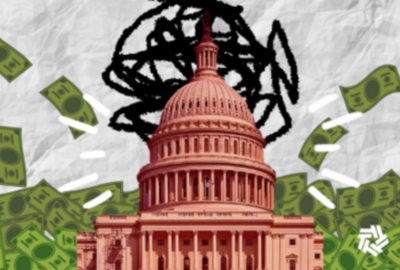
Congress pushes Treasury to let Recovery Board analytics tools live on
Four powerful lawmakers want to know whether the Treasury Department will incorporate the Recovery Operations Center's successful big-data tools into its DATA Act...
Four powerful lawmakers are pressing the Treasury Department to explain why it has not yet ensured that some of the tools used by the Recovery Operations Center will live on after the Recovery Accountability and Transparency Board ceases operations this fall.
Sens. Ron Johnson (R-Wis.) and Tom Carper (D-Del.), chairman and ranking member of the Senate Homeland Security and Governmental Affairs Committee, respectively, and Reps. Jason Chaffetz (R-Utah) and Elijah Cummings (D-Md.), chairman and ranking member of the House Oversight and Government Reform Committee, respectively, wrote to Treasury Secretary Jacob Lew on July 16 asking for the department’s plans to incorporate the center’s data analytics tools into the Digital Accountability and Transparency Act (DATA Act).
“The ROC is a central data analytics service that uses data-mining, data-matching and predictive analytic technologies to oversee the disbursement of federal funds. The tools have been used for oversight of Recovery Act funds and Hurricane Sandy Relief funds, and to assist in inspectors general and law enforcement investigations,” the lawmakers wrote. “The ROC has been a success — staff and analytical tools have been able to identify misuse of veterans’ benefits, federal awards to excluded contractors or recipients that are otherwise ineligible for federal awards, Medicare and Medicaid fraud and contractors that have entered into bankruptcy or have federal tax liens.”
In the DATA Act, Congress gave Treasury the authority to preserve the RAT Board’s tools, but the lawmakers said Treasury hasn’t used that authority.
With the board expiring on Sept. 30, the lawmakers said they were concerned Treasury may be missing out on proven tools to reduce improper payments, which increased to almost $125 billion in fiscal 2014 from $115 billion the year before.
The lawmakers said, as of June 29, the Government Accountability Office told the House Oversight Committee that Treasury had not made any plans to move the data analytics capabilities into its DATA Act efforts. GAO’s briefing to the House committee is part of its aggressive oversight of the law, which also includes a report coming later this calendar year.
The lawmakers asked Lew to tell them by July 23 how Treasury planned to “preserve the ROC’s analytical tools for governmentwide use to address ongoing concerns with improper payments and fraud prevention.”
Hudson Hollister, the executive director of the Data Transparency Coalition, said in an email to Federal News Radio that Treasury is losing out on one of the main opportunities that is supposed to come from the DATA Act: applying big data analytics to federal spending.
“Since the Treasury Department has decided not to absorb the ROC and redeploy it against all federal spending, it’s now nobody’s job to connect inspectors general with the insights that governmentwide standardization makes possible. Moreover, if the federal government fails to use its spending data, once standardized, to detect fraud, the government will have less incentive to ensure the data is of high quality,” Hollister said. “If the Treasury Department is unwilling to embrace governmentwide anti-fraud analytics, Congress should give the job to somebody else. Our coalition believes that an analytics platform built like the ROC and with a strong mandate from Congress could detect, and stop, billions of dollars of waste and fraud for an investment of much less.”
Treasury and the Office of Management and Budget kicked off the DATA Act implementation earlier this year. In May, they released the first set of data standards, implementation guidance and a DATA Act playbook.
OMB and Treasury updated the data standards as recently as July 10, adding three new final standards under the Awardee and Recipient Entity Data Standards.
An email to Treasury requesting comment on the letter was not immediately returned.
Copyright © 2025 Federal News Network. All rights reserved. This website is not intended for users located within the European Economic Area.
Jason Miller is executive editor of Federal News Network and directs news coverage on the people, policy and programs of the federal government.
Follow @jmillerWFED



